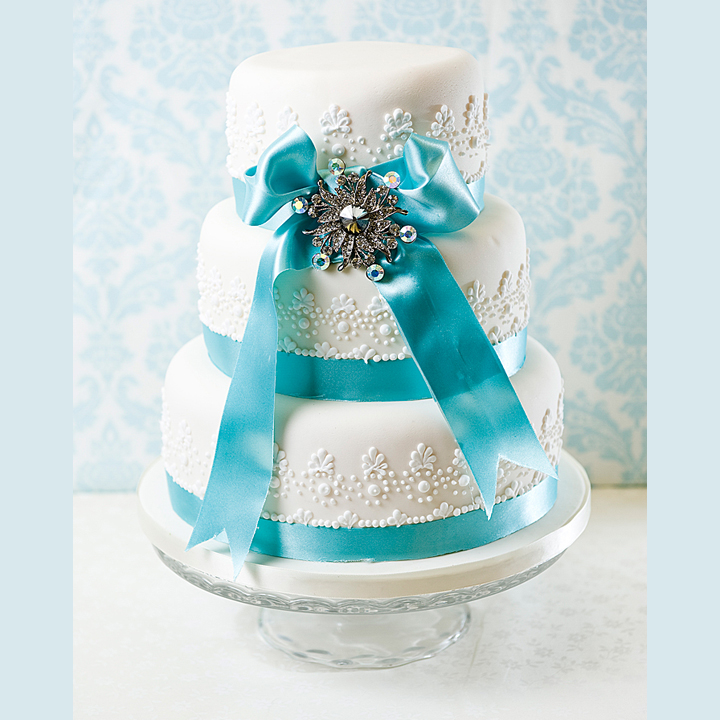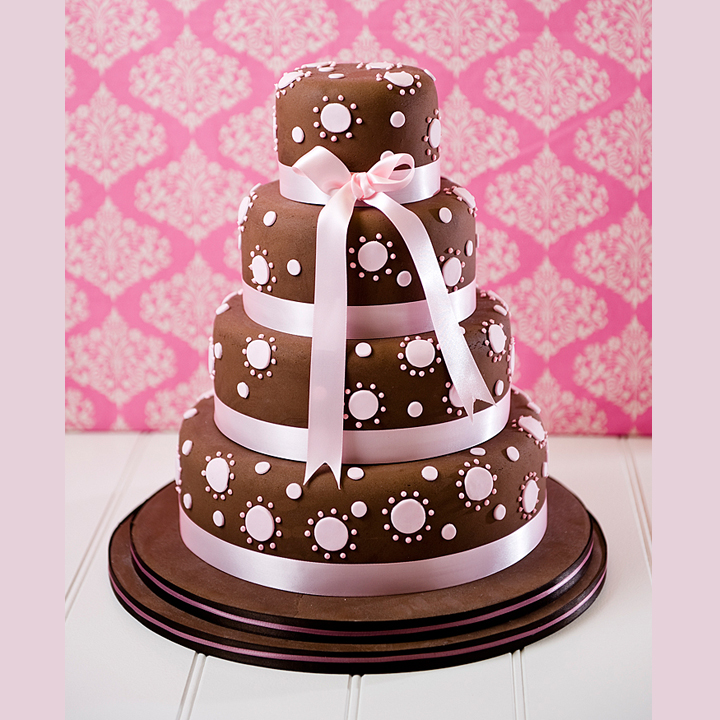Everything you want to know about wedding cakes
Robin
When you start planning your wedding, your cake is one of the first things you will want to decide on. And as a showstopping feature of the special day, it deserves plenty of attention. But as you’ll soon realise, there are a lot of decisions to make, from the size and shape to colours, flavours, wedding toppers and decorations.
You’re bound to have questions, so we’ve put together the ultimate guide to wedding cakes, from traditions and storing your cake to how you can customise it for your big day.
Why are wedding cakes white?
The tradition of white wedding cakes began in Victorian times. In the early 19th century, sugar became more accessible and affordable, but white sugars were still expensive so only the wealthy families could choose a pure white icing. It served as a status symbol and when Queen Victoria chose white icing on her own wedding cake, it gained the title of ‘royal icing’. Today, classic royal icing is still used on fruit cakes, but wedding cakes are more likely to be covered with a layer of fondant or buttercream instead.
Where does the tradition of saving cake come from?
The tradition of saving the top tier of the wedding cake dates back decades, and it was meant to be saved for the christening of the couple’s first child. But values have changed over the years and now, couples may choose to save their top tier for a number of reasons, such as freezing it for their first wedding anniversary or enjoying it the next day for breakfast.
Can I choose a chocolate wedding cake?
Traditional wedding cakes were made from fruit because it was a long-lasting cake. But now, couples choose a wide range of different flavours that they enjoy most as a couple or which will appeal to their guests. Some brides and grooms even choose a different flavour for each tier of their cake to cater to all tastes. And if your favourite flavour is chocolate, there’s no reason not to choose it for your special day.

How long does wedding cake last?
If you’re choosing a sponge and buttercream cake, avoid storing it in the fridge as this will only dry your cake out and make the icing go hard. Keep the cake out of direct sunlight and covered in an airtight container to prevent it from drying it out, and it should last for several days like this. If your cake has been cut into, individual airtight containers is the best way to keep each portion as fresh as possible. If you’re not planning on eating it within the next few days, freezing is the best option.
How do I freeze my wedding cake?
Wedding cake freezes well, providing you take the right steps to store it properly. Make sure that any decorations, wedding toppers and ribbons have been removed from the cake and transfer it to a foil-covered cardboard or plastic plate.
Freeze the cake in the freezer uncovered for around an hour to set the icing so it doesn’t stick to the paper once it’s wrapped. Then remove it from the freezer and wrap it in a layer of clingfilm and tin foil, ensuring that the covering is completely airtight to prevent the cake from drying out. It can then be returned to the freezer until you want to eat it, at which point, remove to defrost slowly at room temperature.
How tall should my cake be?
The height and size of your wedding cake is based on the number of guests you have attending, in addition to the style of cake you envision for the day, from round tiers to a square cake or a unique shape. If you’re planning a smaller guest list, one or two tiers may be sufficient, whereas a grand celebration may require several tiers to ensure everyone gets a slice.
Which is the best choice: fondant or buttercream?
The decision between fondant or buttercream doesn’t just come down to personal preference but also the style of decoration you want for your cake. Some designs work better in firmer fondant, while a fluffy and light design works brilliantly with a soft buttercream. Buttercream doesn’t hold up well in hot, humid environments so make sure you factor this into your decision making too, as a summer wedding may be better suited to a fondant design.
At Cakes by Robin, we specialise in creating bespoke luxury wedding cakes that are guaranteed to exceed your expectations. Contact us today to talk through your ideas with a member of our team.
Categories
- Birthday Cakes
- Cake Recipes
- Celebrity Cakes
- Children's Cakes
- Children's party styling
- Christening Cakes
- Christmas Cakes
- Cookies
- Corporate Cakes
- Corporate Cookies
- Cupcakes
- Custom Dessert Tables
- Dessert tables
- Easter Cakes
- Florists
- Great British Bake Off
- London Cakes
- Miscellaneous
- No fondant Cakes
- Recommendations
- Specialist Cakes
- Themed Cakes
- Wedding Cakes
- Wedding Services
- Weddings

